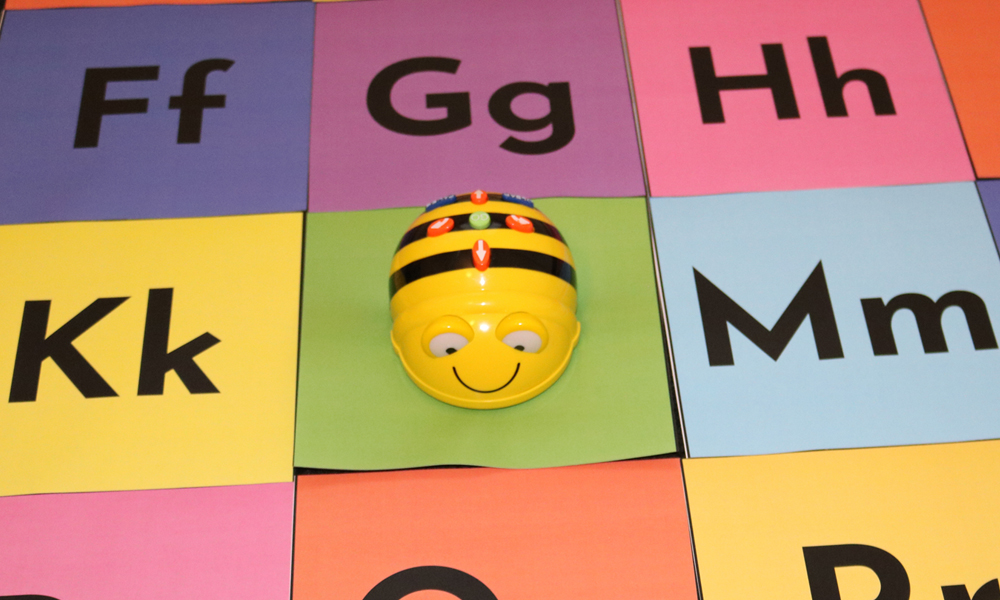In this second installment of our Bee-Bot series we explore ways in which teachers can design creative learning experiences that integrate the Digital Technologies curriculum with English concepts to empower students’ to take ownership of their learning.
Bee-Bots are a wonderful digital technologies resource to introduce students to coding and computational thinking. The small robot can remember a sequence of up to 40 commands, directing it to move forwards and backwards in 15 cm increments, and to turn 90 degrees left and right.
With four directional buttons, and a Go, Pause, and Delete buttons, the Bee-Bot is perfect for junior primary classes. After each command, the Bee-Bot beeps and blinks, which allows students to count its movements and follow the sequence of code they develop to ensure its accuracy. This enables students to create simple algorithms while developing their problem solving skills in a fun learning environment.
Here are five ways you can use Bee-Bots in your Literacy lessons. (with free downloadable resource)
Literacy Lesson ideas
- Retelling stories
- Creating their own stories
- Name Game
- Letter recognition
- Sequencing
1. Retelling Stories
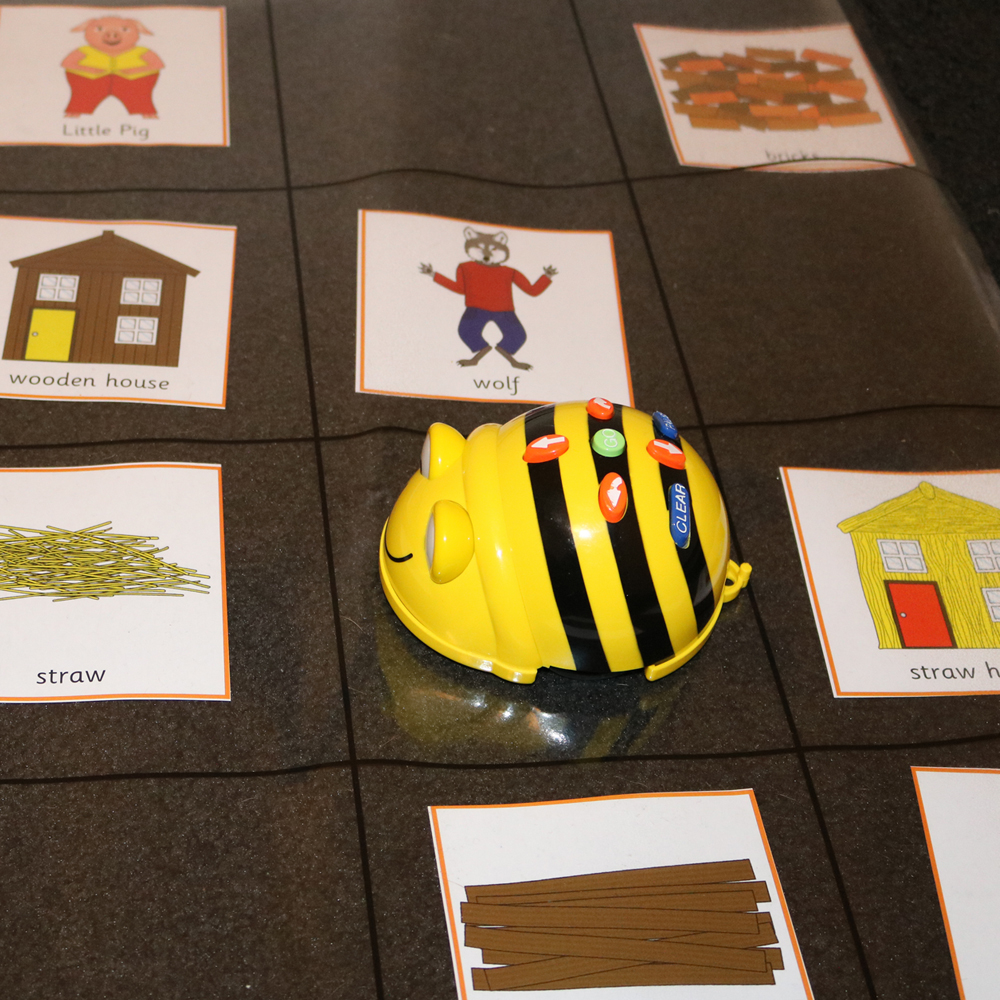
Learning Intention: Retell order of events in a story
Resources:
- Bee-Bot
- Story Book (ie Three Little Pigs)
- Transparent grid mat
- Kinder squares
- Pencils
Lesson Description:
- Read story to the class
- Draw key scenes from the story on the kinder squares
- Place images under transparent grid mat
- Code Bee-Bot to make its way to each scene in the correct order
- Retell the story as the Bee-Bot travels around the mat
2. Creating their own Stories
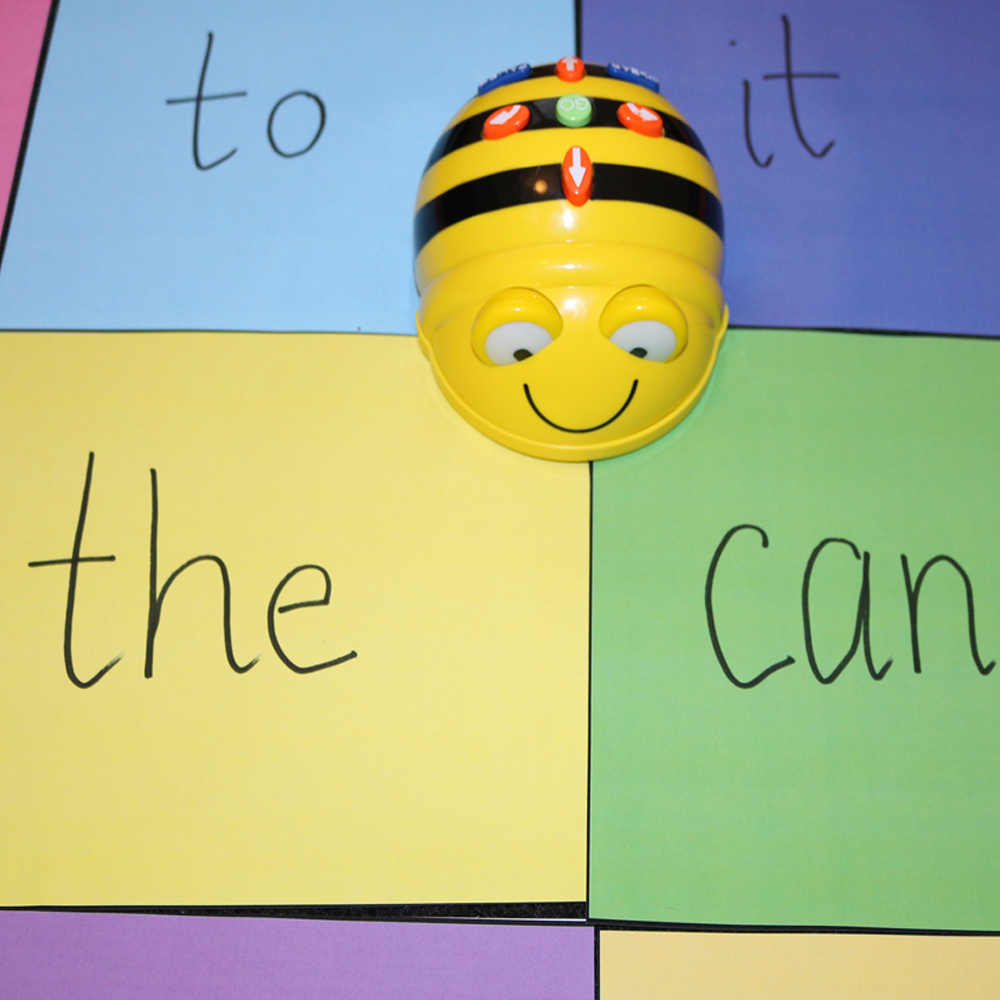
Learning Intention: Create short stories
Resources:
- Bee-Bot
- Transparent grid mat
- Kinder squares
- Pencils
Lesson Description:
- Create plot of a story
- Draw key scenes of the story on the kinder squares
- Place images under transparent grid mat
- Code Bee-Bot to make its way to each scene in the correct order
- Tell your story as the Bee-Bot travels around the mat
3. Letter Recognition
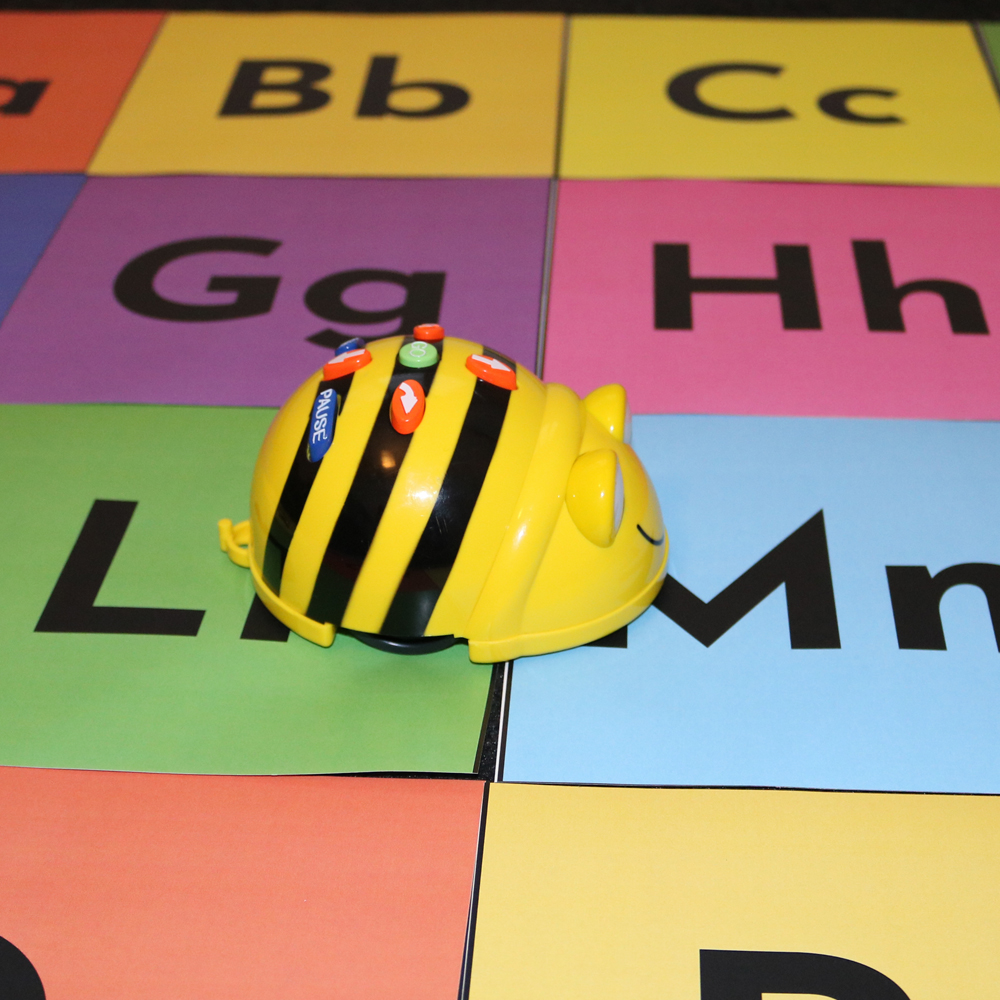
Learning Intention: Recognise letters/sounds
Resources:
Lesson Description:
- Place cards in
- Code Bee-Bot to stop on a specific letter
- Can differentiate to word blends and spelling patterns
- Have their partner say the letter and the sound it makes
4. Secret Word Game
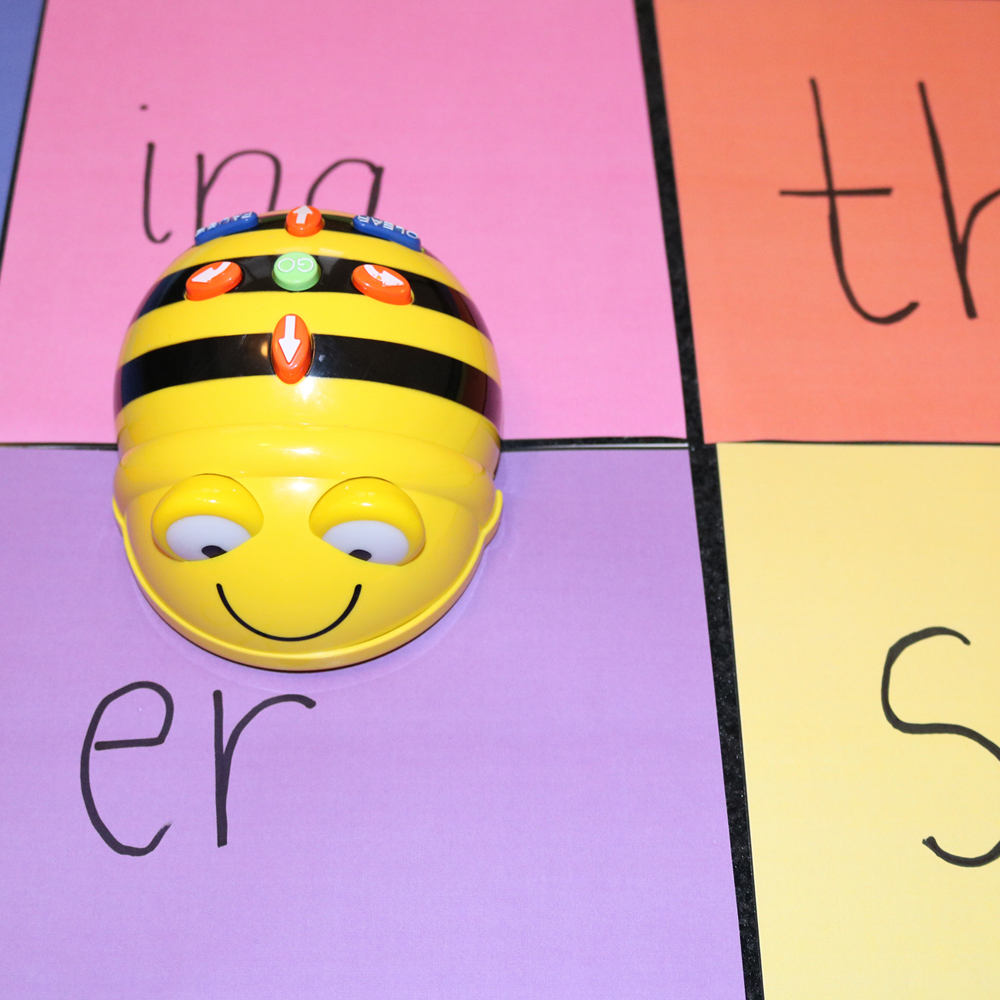
Learning Intention: recognise spelling patterns
Resources:
- Bee-Bot
- Alphabet Mat
Lesson Description:
- Place spelling words on flashcards
- Place flashcards facing down on the floor.
- Partner picks up flash card and reads word
- Partner then spells word out using Bee- Bot
5. Sequencing
Learning Intention: Understanding the order of events in the school day
Resources:
- Bee-Bot
- Image cards or Kinder Squares with pictures of events that happen in the school day
Lesson Description
- Create pictures of events that happen in school day (example: unpack bag, diary, lunch into lunch tub)
- Place pictures into a grid (you may use blank coloured kinder square in between events)
- Code the Bee-bot to travel in the order of the events that happen in the school day.
Differentiating Bee-Bot lessons
To increase the complexity of coding the Bee-Bot with any of the above lesson ideas, I introduce rules that challenge students to deepen their understanding of sequencing code to achieve the objective
- State start & finish point – The Bee-Bot must begin and finish in specified squares
- Can only turn left or right – Only allow the Bee-Bot to turn in one direction
- Have to use specific number of moves – State the number of moves and/or codes that can be used
- Can’t use specific square – Place an object on a square/s that the Bee-Bot must not use
How do you use Bee Bots in your classroom? We would love to hear from you!
Check out for the other chapter in this series exploring 5 Mathematics Bee-Bot Lesson Ideas for the Classroom.
About the author
Eleni Kyritsis is an award winning Year 3 Teacher and Leader of Digital Learning & innovation from Melbourne, Australia. She is the Founder of TeachTechPlay, a monthly web show and annual conference designed by teachers to share their creative lesson ideas. Eleni facilitates professional learning workshops around the world that focus on unleashing creativity and curiosity in classrooms. You can contact her at elenikyritis.com and @misskyritsis

